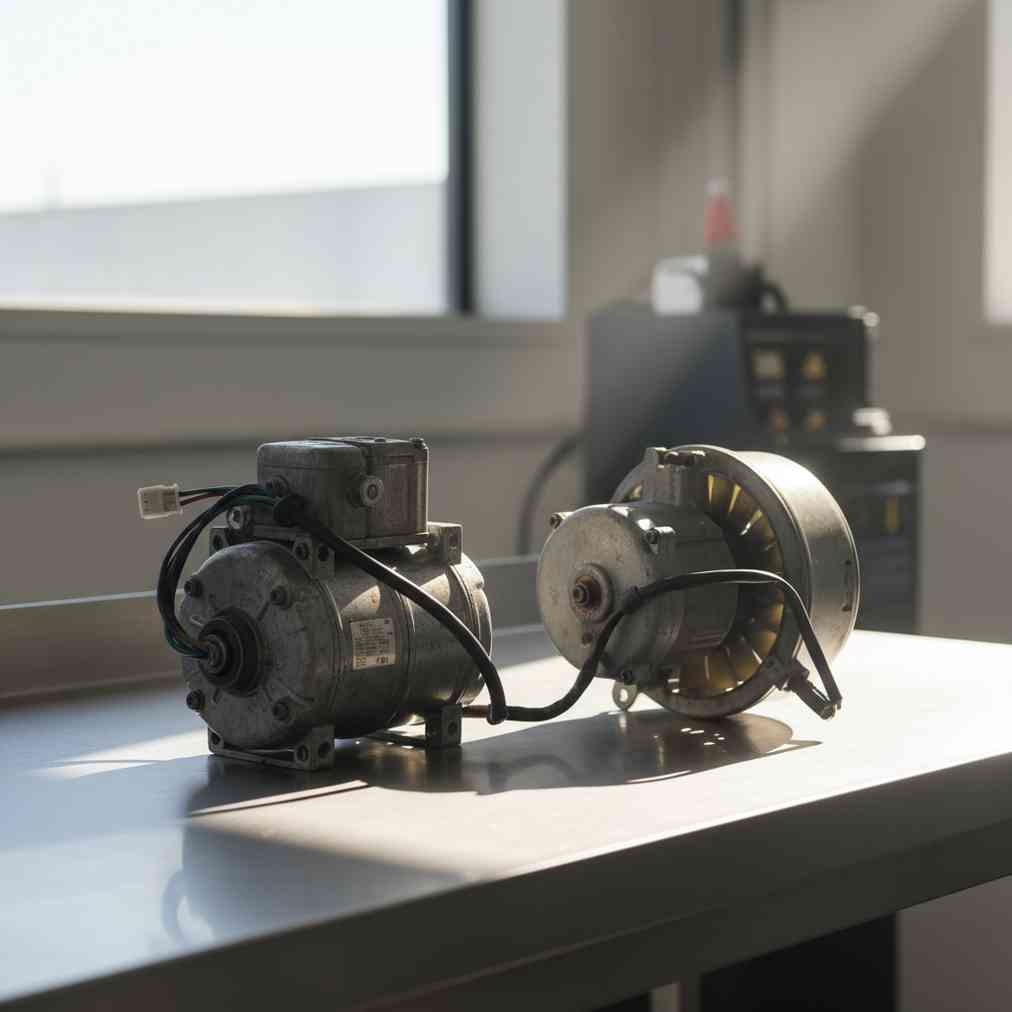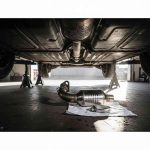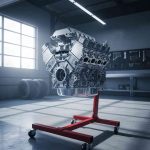Understanding the Market for Used HVAC Components
When your vehicle’s air conditioning system fails, replacing components like **AC compressors** and **blower motors** can be expensive. Buying used HVAC components from salvage yards near me offers a cost-effective alternative that can save you hundreds of dollars while maintaining system performance. The market for used automotive HVAC parts has grown significantly as vehicle owners seek budget-friendly repair solutions.
Used **OEM (Original Equipment Manufacturer)** components provide the perfect balance between cost savings and reliability. These parts come from donor vehicles in wrecking yards and can offer substantial value when properly inspected and tested. According to industry experts, a well-maintained used compressor can provide years of reliable service at a fraction of the cost of new components.
Primary Sources for Locating Used HVAC Components
Finding quality used AC compressors and blower motors requires knowing where to look and what to expect from different sources. Here are the most reliable locations for sourcing these critical components:
Auto Salvage Yards and Wrecking Yards
**Auto salvage yards** remain the primary source for pulling used OEM parts directly from donor vehicles. These facilities offer the advantage of seeing the component in its original installation, allowing you to assess how it was maintained. Many salvage yards employ knowledgeable staff who can help locate compatible parts and provide basic functionality information.
Similar to buying other used components from junkyards, purchasing HVAC parts requires careful inspection and testing. The advantage of salvage yards is the ability to physically examine the part before purchase and often test basic functionality on-site.
Online Marketplaces and Specialized Platforms
- **eBay and Facebook Marketplace** – Wide selection with detailed photos and seller ratings
- **Craigslist** – Local sellers offering pickup options and direct inspection
- **Specialized HVAC platforms** – Focus on hard-to-find or surplus equipment
- **Used parts dealers** – Often test and inspect components before sale
Key Benefits of Buying Used OEM HVAC Components
| Benefit | Description | Potential Savings |
|---|---|---|
| Cost Savings | Substantially less expensive than new units, making replacement budget-friendly for older vehicles | 50-70% off retail price |
| Environmental Impact | Reduces waste by reusing functional components and decreasing manufacturing demand | Sustainable choice |
| Availability | Essential for finding parts for discontinued models or older vehicles | Access to rare components |
| OEM Quality | Original equipment maintains factory specifications and fitment | Reliable performance |
“When your air conditioner fails, replacing it can be prohibitively expensive, especially if the problem is with the AC compressor. This critical component keeps the refrigerant flowing through the system, which is required for effective cooling. A used AC compressor can be an excellent choice for those looking to strike a balance between price and performance.”
Comprehensive Inspection Guide for Used AC Compressors
Proper inspection is crucial when purchasing used HVAC components. A thorough evaluation can prevent costly failures and ensure you get a reliable part. Here’s a detailed inspection protocol based on professional HVAC inspection guidelines:
Visual Inspection Checklist
| Area to Check | Inspection Point | Warning Signs | Action Required |
|---|---|---|---|
| Visual Appearance | Overall condition, rust, corrosion | Excessive rust or corrosion | Consider rejection if severe |
| Housing & Mounts | Cracks in housing, broken mounting tabs | Physical damage visible | Immediate disqualification |
| Leak Detection | Oil or refrigerant residue on casing | Oil stains or wet spots | Major red flag – avoid |
| Pulley/Bearing | Manual rotation test | Grinding, catching, excessive noise | Indicates internal bearing wear |
Functional Testing Procedures
Beyond visual inspection, functional testing provides critical insight into component reliability. These tests should be performed whenever possible, following professional HVAC technician protocols:
- **Clutch Engagement Test** – Apply 12V power to clutch; should engage smoothly without hesitation
- **Pulley Rotation** – Should spin freely without binding or unusual resistance
- **Internal Oil Check** – If accessible, examine oil for milky appearance indicating moisture contamination
- **Electrical Continuity** – Test all electrical connections with multimeter
- **Mounting Point Integrity** – Verify all mounting brackets and hardware are intact
Blower Motor Inspection and Testing Guide
**Blower motors** are generally easier to test than compressors and can often be evaluated more thoroughly before purchase. These components are responsible for circulating air through the HVAC system and are critical for proper cabin temperature control.
Quick Testing Methods for Blower Motors
| Test Method | Procedure | Normal Result | Failure Indication |
|---|---|---|---|
| Bench Test (Direct Power) | Connect to 12V power source safely | Motor runs smoothly | No response or erratic operation |
| Tap Test | Lightly tap motor while applying power | Consistent operation | Only works after tapping |
| Multimeter Resistance | Measure ohms between terminals | 1-20 ohms typical range | Infinite or zero resistance |
| Visual Inspection | Check for burns, corrosion, damage | Clean, undamaged appearance | Heat damage or corrosion visible |
“If you don’t have a multimeter, you can also test a blower motor by simply connecting it to a power source (like a battery) and seeing if it turns on. If it doesn’t turn on, then the blower motor is defective.”
Advanced Inspection Techniques
Professional-level inspection goes beyond basic visual and functional tests. Using comprehensive HVAC functional testing checklists ensures thorough evaluation:
Detailed Component Analysis
- **Refrigerant System Integrity** – Check for internal contamination or blockages
- **Electrical System Verification** – Test all circuits and connections for proper voltage
- **Mechanical Component Assessment** – Evaluate bearings, seals, and moving parts
- **Performance Parameter Testing** – Measure operating specifications when possible
- **Compatibility Verification** – Ensure part numbers and specifications match your vehicle
Just as with other OEM parts found in junkyards, HVAC components require careful verification of compatibility and condition to ensure successful installation and operation.
Pricing and Negotiation Strategies
Understanding fair market pricing for used HVAC components helps ensure you get the best value. Prices vary significantly based on vehicle make, model, age, and component condition. Research comparable listings before making purchases, and don’t hesitate to negotiate, especially when buying multiple components.
Consider the total cost of ownership, including potential installation challenges and the lack of warranty coverage typical with used parts. Sometimes paying slightly more for a component with a basic guarantee or return policy provides better overall value.
Installation Considerations and Professional Tips
Successfully installing used HVAC components requires proper preparation and attention to system cleanliness. Following established HVAC installation checklists ensures optimal performance:
- **System Flushing** – Clean refrigerant lines before installing used compressor
- **Filter Replacement** – Always install new receiver/drier and cabin air filter
- **Refrigerant System Service** – Evacuate and recharge system with proper refrigerant type
- **Leak Testing** – Perform thorough leak detection after installation
- **Performance Verification** – Test system operation across all temperature ranges
Common Mistakes to Avoid When Buying Used HVAC Parts
Learning from common purchasing mistakes can save time and money. Many buyers focus solely on price while overlooking critical compatibility and condition factors. Here are key pitfalls to avoid:
- **Ignoring Part Numbers** – Always verify exact part number compatibility
- **Skipping Electrical Tests** – Electrical failures are common in used components
- **Buying Without Return Policy** – Avoid sellers who don’t offer any return options
- **Overlooking Supporting Components** – Consider replacing related parts like receiver/driers
- **Inadequate Research** – Know your vehicle’s specifications before shopping
Environmental Impact and Sustainability Benefits
Choosing used HVAC components contributes to environmental sustainability by extending component lifecycles and reducing manufacturing demand. The automotive recycling industry plays a crucial role in resource conservation, and purchasing used parts supports this important environmental initiative.
When your current vehicle reaches end-of-life, consider selling it for cash to contribute to the recycling cycle, ensuring its components can help other vehicle owners while providing you with immediate value.
Quality Assurance and Warranty Considerations
While used parts typically don’t include manufacturer warranties, many reputable sellers provide limited guarantees or return policies. Understanding what protection you have helps make informed purchasing decisions and provides recourse if components fail prematurely.
Document all component information, including part numbers, purchase dates, and seller contact information. This documentation becomes valuable if issues arise and supports warranty claims or returns when applicable.
Future Trends in Used HVAC Component Market
The market for used automotive HVAC components continues evolving with technological advances and changing consumer preferences. Improved testing equipment allows more accurate condition assessment, while online marketplaces expand access to hard-to-find components.
Sustainability awareness drives increased demand for recycled parts, supporting growth in the used component market. Professional reconditioning services are becoming more common, offering used parts with enhanced reliability and limited warranties.
Conclusion: Making Smart Purchasing Decisions
Successfully buying used HVAC components requires balancing cost savings with quality assurance. Thorough inspection, proper testing, and working with reputable sellers maximize your chances of getting reliable components that provide years of service.
Remember that proper installation and system maintenance are crucial for maximizing the lifespan of any HVAC component, whether new or used. Following professional HVAC inspection guidelines and working with qualified technicians ensures optimal system performance and longevity.
The used HVAC component market offers substantial savings opportunities for informed buyers willing to invest time in proper evaluation and inspection. With careful selection and professional installation, used OEM components can provide reliable, cost-effective solutions for maintaining your vehicle’s climate control system.





Leave a Reply
You must be logged in to post a comment.